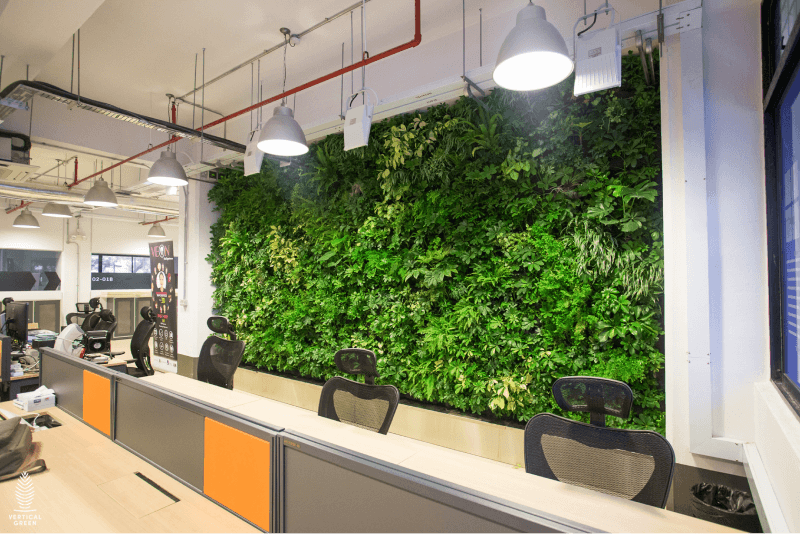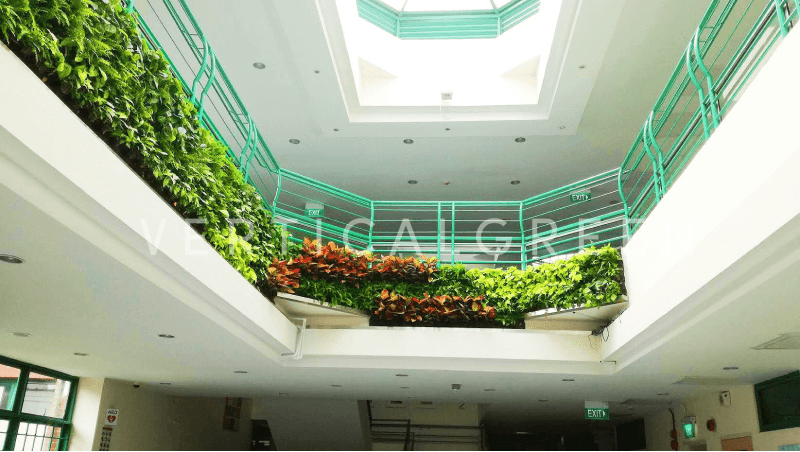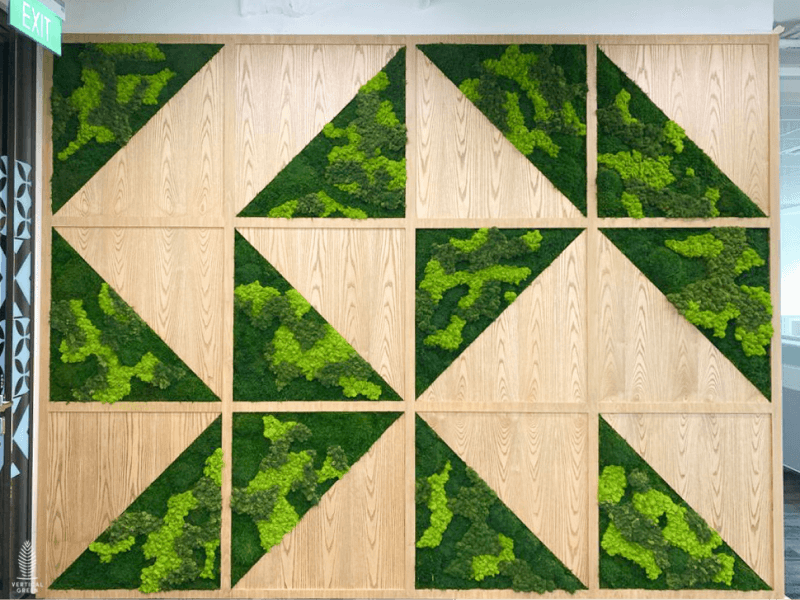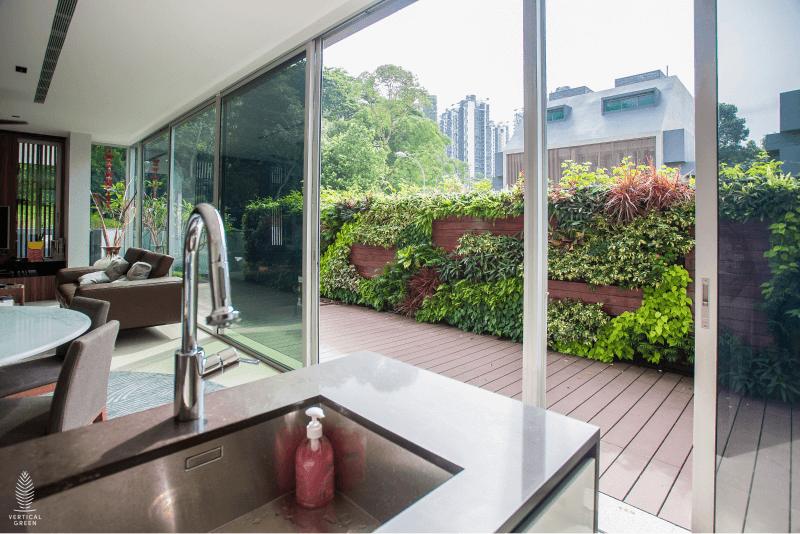As the world becomes increasingly digitized and urbanized, the importance of incorporating nature through biophilic design ideas into our built environments is more important than ever. Studies have shown that exposure to nature can have a positive impact on our health and well-being, and as a result, biophilic design has become a popular trend in commercial and residential architecture.
In this article, we talk about how to incorporate biophilic design in a space and list down the ways you can bring a little bit of the outdoors inside your homes and offices.
Here are eight important biophilic interior design concepts to get you started.
But First, What Does "Biophilic Design" Mean?
The word “biophilic” is rooted in two other words. Bio- comes from the Greek word “bíos,” which means “life,” while -philic is rooted in the word “philía,” which means “friendship or affinity.”
Combined, the word biophilic literally translates to “love of life.”
In the context of interior design, biophilic design is a way of creating built environments that connect us with nature and promote our well-being. This can be achieved in a number of ways, such as incorporating natural light and ventilation, using natural materials, and bringing plants into the space.
How is Biophilic Design Incorporated in Our Environment?
In residential spaces, this might mean adding a living wall or installing a skylight to let in more natural light. Meanwhile, in commercial spaces, it could involve using biomorphic shapes in the architecture or creating a green space that can be used by employees during their break time.
At the core of biophilic design is the idea that humans have an innate connection to nature. This is supported by research, which has shown that exposure to nature can lead to a number of benefits, such as improved mental health, increased productivity, and reduced stress levels.
In fact, a recent study on the impact of biophilic design in an office space shows that employees who were exposed to views of nature reported higher levels of satisfaction with their work environment. They also experienced less eye strain, headaches, and fatigue.
Meanwhile, for shoppers in a mall or commercial space with elements of biophilic design, researchers observed that the shoppers reported feeling more relaxed and had a better overall experience.
So, if you’re looking to incorporate biophilic design ideas into your home or workplace, here are eight essential ways to get started.
8 Essential Ways to Introduce Biophilic Design in an Indoor Space

1. Incorporate Natural Light
One of the simplest ways to introduce biophilic design into a space is to let in more natural light. This can be done in many ways, such as adding skylights or installing larger windows.
Not only will this help to warm and brighten up the space, but it will also give you the opportunity to connect with the outdoors. If you live in an urban area, consider adding a window that faces a courtyard or garden.
Biophilic design also includes thermal comfort as one of its key principles. And apart from windows, you can maintain a comfortable temperature in your space by using thermal mass materials like stone or concrete to help moderate temperature swings.
Install energy-efficient heating and cooling systems so that you’re not wasting energy – both for the sake of the environment and your business goals. And use shading devices like blinds or curtains to control the amount of sunlight that comes into the space.
2. Bring the Outdoors In
Another easy way to incorporate a feel of nature into your space is to add some greenery. And to fully introduce biophilic design into your space, why not bring nature inside?
Potted plants or an indoor garden can help purify the air and provide a visual connection to nature. This could be anything from a simple herb garden to a more elaborate setup with different kinds of plants. And if you really want to go all out, consider installing a living wall or green roof.
Not only will this help purify the air, but it will also create a more pleasant environment.
Feel free to check our green wall guide for more information on how to incorporate an element of biophilic design into your space.
3. Use Natural Materials
Another way to incorporate a biophilic concept to your indoor space is to use natural materials. This could involve anything from using wood furniture to incorporating stone or bamboo into the décor.
The feel of having natural materials around in an indoor space emphasizes a connection to the outdoors and nature, which helps reduce stress levels and create a more calming environment.
4. Add Water Elements
Another way to bring a sense of nature into your space is to add water elements.
Imagine having a corner in an indoor area that is well-ventilated with a high ceiling and a wall-installed, stone water fountain as its centerpiece. The air here is fresher, and the ambiance is more relaxing, which would be perfect for taking a break from work or studying.
5. Create Visual Connections to Nature
If you can’t physically bring nature into your space, you can still create visual connections to the outdoors.
This can be done in many creative ways, such as adding photos or paintings of nature scenes. You could also try hanging a mirror near a window to create the illusion of a larger space with more natural light.
As a principle of biophilic design, visual comfort is always something to consider. We spend a lot of time looking at screens these days, so it’s important to make sure that our digital devices don’t cause eye strain or headaches.
6. Use Natural Colors
Another way to add a biophilic touch to your space is to use natural colors.
Natural colors have been shown to have a calming effect on the mind, which can help to reduce stress levels. They also help create a more pleasant and inviting environment.
Choosing the right combination of natural colors should always be done in accordance with its effect and the way it makes you feel. After all, different colors can help set the mood in a space, so it’s important to choose wisely.

7. Add Textures
Adding textures could involve anything from using rough stone surfaces to rugs or blankets made of natural fibers.
The idea is to create a space that feels more organic and less like a sterile environment. Adding textures can also help to reduce noise levels, as well as add a visual element to the space.
Note how the abundance of natural textures influences another important element of biophilic design, which is acoustics. Make sure that your space has good sound absorption so that noise level stays at a minimum.
A few examples of this can be seen in the use of wood paneling or stone walls in an office space. The addition of these features can help create a more natural and relaxing environment that is still professional and functional.
8. Incorporate Biomorphic Shapes
Add curved lines to your décor and use furniture with organic shapes to evoke biophilic interior design ideas.
One example of this is the use of curved lines in architecture or furniture. Curved lines are found in nature, and they help create a more organic feel in a space and make it more inviting.
Another example is the use of furniture with organic shapes. This could include anything from a coffee table with curved legs to a chair with an ergonomic design. The goal is to create a space that feels natural and comfortable.
Biophilic design is all about bringing the outdoors inside and using materials, colors, textures, and shapes that are found in nature. By incorporating these elements into your space, you can create a more relaxing and inviting environment to relax, work, or play.
Vertical Green is Your Partner in Promoting Biophilic Design Spaces
Vertical Green is your one-stop shop for all things biophilic design. From living walls to indoor gardens, we can help you create a space that’s both beautiful and sustainable.
We’ll guide you through all your green wall needs, especially if you’re looking for any of the following:
As an important element to incorporating biophilic ideas in interior design, green walls offer unique benefits that make them an exquisite choice for any space. Enjoy improved air quality, reduced noise levels, and create a more comfortable environment for everyone.
Give them a reason to “love life,” just as biophilic design promotes the concept of finding comfort in nature.
Contact us today to learn more about biophilic design and how we can help.




